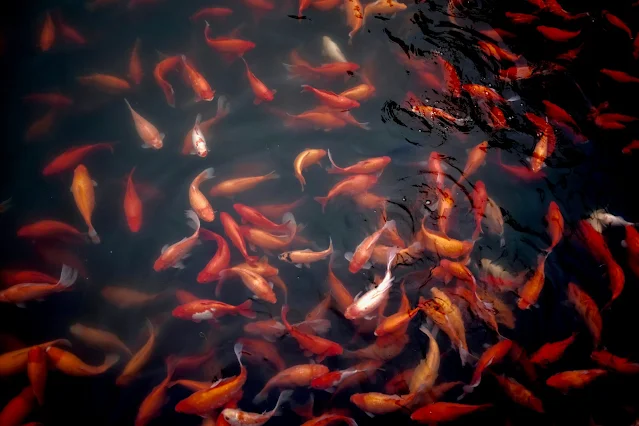Breeding Fish
Breeding fish in your home aquarium can be a deeply rewarding experience, offering a glimpse into the fascinating lifecycle of aquatic creatures. Whether you’re a seasoned hobbyist or a curious beginner, mastering the art of successful fish breeding requires patience, preparation, and a keen understanding of your fish’s needs. In this guide, we’ll walk you through essential steps and aquarium fish breeding tips to help you create a thriving environment for your aquatic pets.
Image Credits: Sailfin Aquatics
1. Choose the Right Fish Species for Breeding
Not all fish are equal when it comes to breeding ease. For beginners, hardy species like guppies, mollies, platies, or bettas are ideal. These easy-to-breed aquarium fish adapt well to home tanks and have straightforward reproductive behaviors. Livebearers (fish that give birth to free-swimming fry) like guppies are particularly beginner-friendly. If you’re more experienced, consider egg-layers like angelfish or cichlids, which may require specific water conditions. Research your chosen species’ mating habits and compatibility to ensure a smooth process.
2. Set Up a Dedicated Breeding Tank
A separate breeding tank setup is crucial for controlling variables and protecting fry. A 10–20-gallon tank works for small species. Key features include:
Sponge Filters: Gentle filtration prevents fry from being sucked in.
Hiding Spots: Use live plants (e.g., Java moss), breeding caves, or mesh nets to shelter eggs and fry.
Optimal Water Conditions: Match pH, temperature, and hardness to your fish’s natural habitat. For example, bettas thrive in warm water (78–80°F), while neon tetras need slightly acidic pH.
3. Condition Your Fish for Breeding
Healthy parents produce healthy offspring. Conditioning fish for breeding involves a nutrient-rich diet to boost vitality. Feed high-protein foods like brine shrimp, bloodworms, or daphnia 2–3 times daily. Live or frozen options stimulate natural hunting instincts and enhance reproductive readiness. Gradually increase feeding for 1–2 weeks before introducing pairs to the breeding tank.
4. Trigger Breeding Behavior
Many species require environmental cues to spawn. Common triggers for breeding fish in aquariums include:
Temperature Adjustments: Simulate seasonal changes by slightly raising or lowering the water temperature.
Lighting Cycles: Mimic natural daylight patterns (12 hours light/12 hours dark) using timers.
Water Changes: A partial water change with slightly cooler water can mimic rainfall, prompting egg-layers to spawn.
For bubble-nesting fish like bettas, ensure calm surface water. For egg scatterers like danios, use a mesh substrate to protect eggs.
5. Care for Eggs and Fry
Once eggs are laid or fry are born, parental care varies. Some species guard their young, while others may eat them. Remove adults if necessary. Fish fry care tips include:
Specialized Diet: Feed fry powdered fry food, infusoria, or freshly hatched brine shrimp.
Clean Water: Perform small, frequent water changes to prevent toxin buildup.
Growth Monitoring: Separate larger fry to avoid cannibalism and ensure even growth.
6. Avoid Common Breeding Mistakes
Even seasoned aquarists can stumble. Steer clear of these pitfalls:
Overcrowding: Stress from cramped spaces hinders breeding.
Ignoring Water Quality: Test ammonia, nitrite, and nitrate levels weekly.
Skipping Research: Breeding requirements vary—always study your species’ needs.
Final Thoughts
Successful fish breeding in your home aquarium is a blend of science and art. Start with hardy species, perfect your setup, and observe your fish closely. Celebrate small victories, like the first sight of eggs or fry darting through plants. For more tips on aquarium care, explore piscesinfo.blogspot.com.
Dive into the world of home aquarium breeding today—your underwater nursery awaits!
By following these steps, you’ll create a thriving environment for your fish to reproduce, ensuring your aquarium becomes a hub of new life. Happy breeding! 🐠✨




Comments
Post a Comment